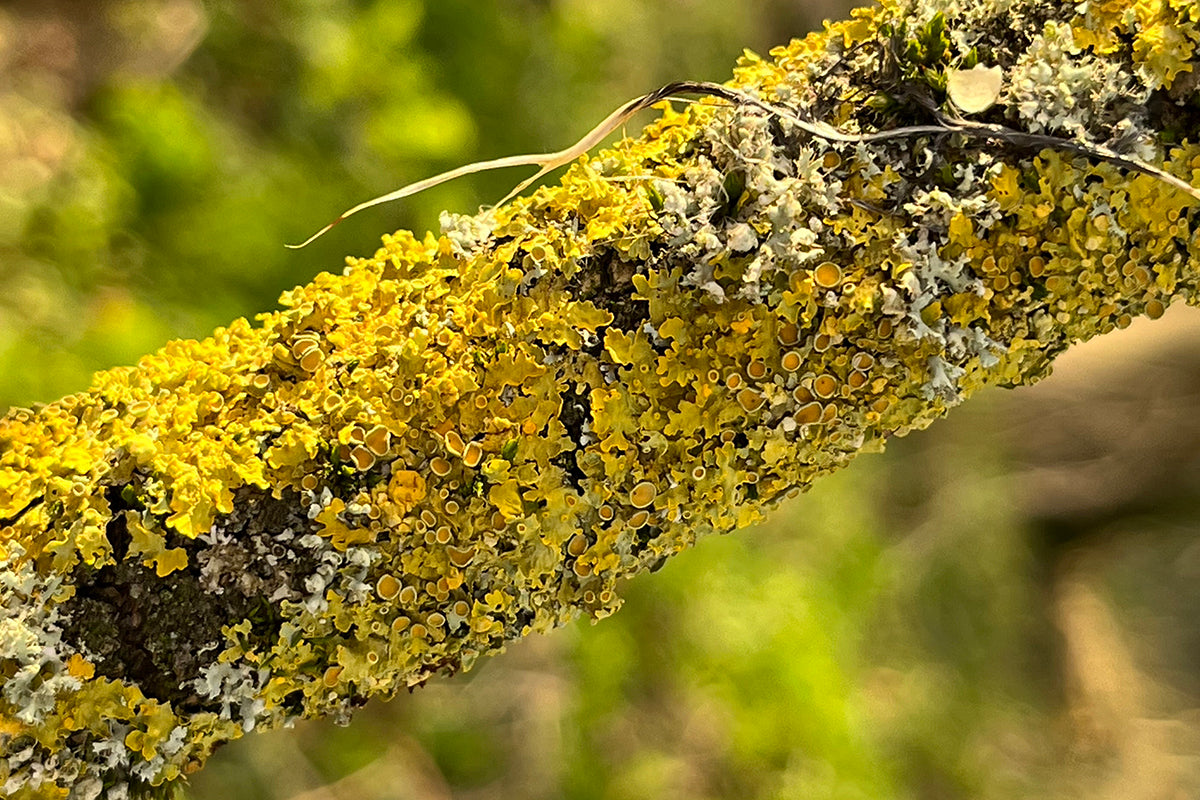A Big Rabbit Hole```1

Strong winds in the week before Christmas blew through the garden like a roaring jet engine, littering the lawns with tree limbs and rotten branches, and creating a giant game of pick-up-sticks in the process. Rakes and wheelbarrows were our tools of choice to clear the debris but while surveying the task in hand it was the detail in the scattering of twigs that caught our eye - each twig was colonised by a variety of lichens, a fascinating world in miniature.
It turns out that we have over 1,800 species of lichens in the UK with over 17,000 species worldwide, where they are indicators of air quality, have potential medical and industrial applications, and are some of the oldest living organisms on earth. What’s more fascinating is that lichens are not a single organism but two, made up of fungi and algae or cyanobacteria - the algae providing the means of photosynthesis to provide the carbon/sugar food source and the fungi shelter/structure. There is some argument as to whether this symbiotic relationship is mutual to both partners or whether there is actually a controlled form of parasitism from the fungi. Some of these lichen fungi, often referred to as lichenicolous lichens, are even parasitic on other lichens.
As with all these subjects and taking into account the natural inquisitiveness common in gardeners, there’s a very big rabbit hole in which to disappear down. Our little twig specimen pictured, harbours at least four species (Yellow Scale - Xanthoria parietina, Monk’s Hood - Hypogymnia physodes, Physcia adscendens, and Hoary Rosette Lichen - Physcia aipolia) and with numerous dry stone walls surrounding the garden all well colonised it looks like we’ve given ourselves a new and interesting cataloguing task for 2024!











